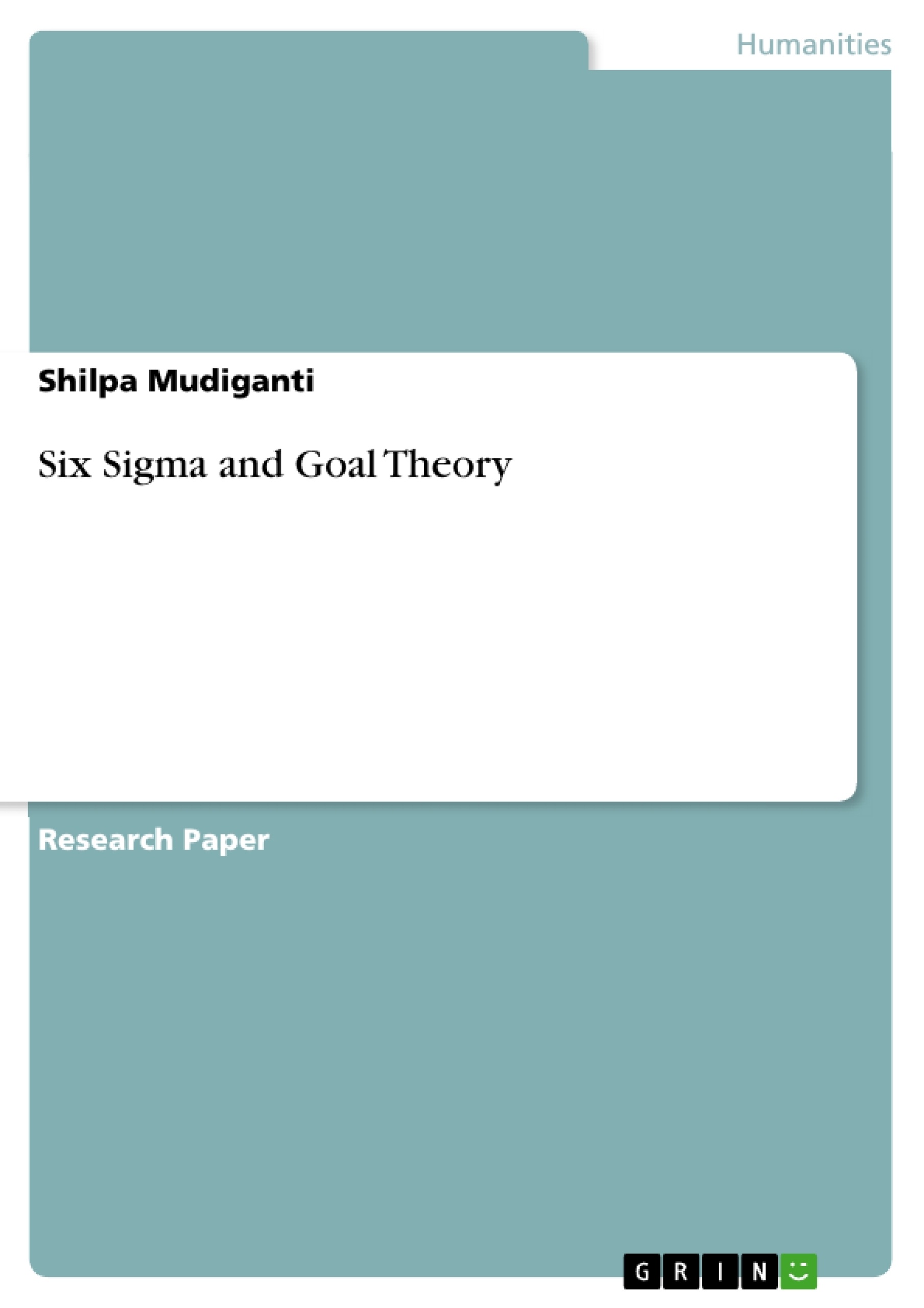Six Sigma is being accepted widely in industries today. The major reason for this being its basic tenet that states that goals are customer-specific. This has led to many success stories that has delighted the customers and companies are embracing this quality process in a big way. It would be interesting to look in to the various ways in which the ideology stated in Goals Theory is being used in this quality process called Six Sigma. This paper highlights the various ways in which goal plays the central role in almost each and every state of Six Sigma like define, measure, control, etc. An intrinsic relationship between Six Sigma and Goal theory, therefore, can be concluded.
Table of Contents
- Six Sigma and Goal Theory
- Goal and Goal Statement
- Map process or the SIPOC approach of Six Sigma
- Goals in Goal theory and Six Sigma
- Goal Attainment strategies of the goal theory and Six Sigma
Objectives and Key Themes
This paper explores the relationship between Six Sigma and Goal Theory, demonstrating how the principles of Goal Theory are actively applied in the Six Sigma quality process. It uses real-world examples of organizations implementing Six Sigma to illustrate the concepts.
- The central role of goals in Six Sigma.
- The importance of clear and challenging goals in driving performance.
- The impact of goal difficulty on employee motivation and performance.
- The role of commitment, self-efficacy, and training in achieving Six Sigma goals.
- The use of Six Sigma tools and methods to facilitate goal attainment.
Chapter Summaries
- Six Sigma and Goal Theory: This chapter provides an introduction to Six Sigma and its customer-centric approach, highlighting its connection to Goal Theory.
- Goal and Goal Statement: This chapter explores the importance of goal setting in Six Sigma, emphasizing the need for clear, challenging, and specific goals. It discusses the significance of goal statements in Six Sigma projects and their alignment with the principles of Goal Theory.
- Map process or the SIPOC approach of Six Sigma: This chapter examines the use of process mapping and the SIPOC approach in Six Sigma, highlighting the role of feedback and goal alignment in the Define phase of the DMAIC process.
- Goals in Goal theory and Six Sigma: This chapter delves into the concept of goal difficulty in both Goal Theory and Six Sigma, exploring how challenging goals can motivate employees and drive performance. It discusses the importance of ensuring goals are attainable and the factors that influence employee commitment, such as leadership, peer influence, and incentives.
Keywords
The key keywords and concepts explored in this paper include Six Sigma, Goal Theory, DMAIC, goal setting, goal difficulty, employee motivation, commitment, self-efficacy, training, process mapping, SIPOC, and performance improvement.
- Citar trabajo
- Shilpa Mudiganti (Autor), 2007, Six Sigma and Goal Theory, Múnich, GRIN Verlag, https://www.grin.com/document/73135




